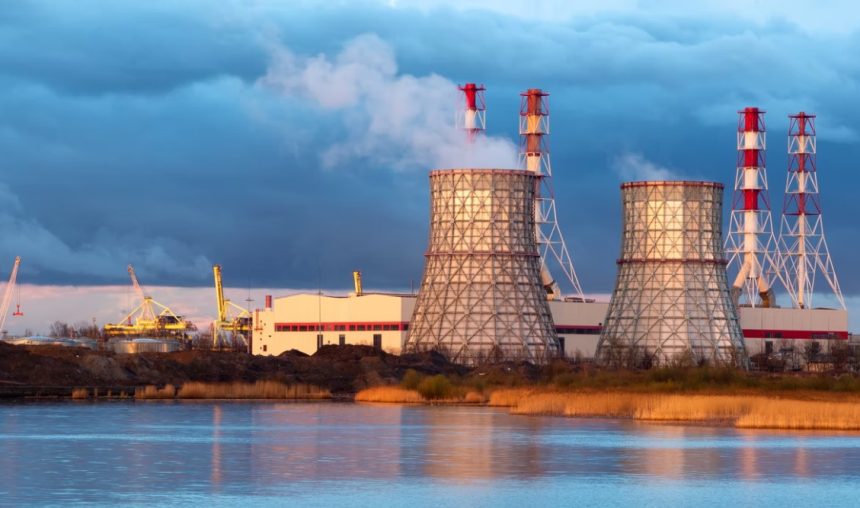In the world of electricity, power substations serve as a critical connection between public utility transmission lines and distribution lines. There are many differences between power stations and substations that those interested in learning more about them should understand before starting on their journey for knowledge.
In this article, we’ll provide a detailed explanation of the differences between power stations and substations.
Purpose
The easiest way to illustrate the difference between power stations and substations is by understanding their purpose. A power station, also known as a power plant, creates electricity. While many types of plants exist, the typical process involves making use of some form of fossil fuel or nuclear reaction to generate heat which then produces steam that turns turbines. This motion powers generator that produces electrical current for distribution networks via transmission lines. A substation is simply where this transition occurs from public utility transmission line voltage levels (usually 115kV, 230kV, or 500kV) down to lower secondary service levels (usually 34.5kV).
Location
Where these facilities are located can help further distinguish them from one another. Power stations are usually located close to the fuel source they will use to create electricity. This can be water, coal, natural gas, oil, or uranium depending on the process used to create heat which then turns into steam that powers turbines and produces an electrical current. The majority of power station locations are numerous miles away from population areas due to concerns about air pollution and radioactivity produced by nuclear reactions for certain types of power plants (e.g., nuclear).
The location of substations is much closer to population centers for various reasons as well. Sometimes, these facilities are placed at industrial sites where electrical demand is high; other times, substations are situated in publically accessible locations such as parks or schoolyards where electrical demand is high. Since substations often reside in populous areas, they are more likely to be the sight of accidental damage such as vandalism or accidents which could expose live wires and jeopardize lives. As a result, double end break substation disconnect switches configurations are common at many substations for safety purposes. These switches allow the utility to shut down all transmission line voltage from entering a substation quickly if an accident occurs by opening both poles of a disconnect switch simultaneously.
Size and Capacity
Power stations and substations vary greatly in size and capacity depending on the electricity demands of the region they serve. For example, very few power plants can generate enough electricity for an entire nation while even small towns have their local distribution network that feeds into a regional transmission line system that connects with larger nearby cities’ networks that feed into power plants via transmission lines originating from the nearest substation. This is why when people turn on their lights, they don’t notice an immediate power drain in their area; instead, electricity is being shuffled around the utility network to reach its destination.
Substations can vary in size as well – some are just a few feet across while others span several acres. The size of substations often depends upon local circumstances such as how many customers or how much electrical demand they need to serve. Substation capacity varies too depending upon voltage levels and frequency ranges required by the types of equipment made up the distribution network that feeds them (e.g., smart meters vs LED streetlights).
Purpose of Transmission Lines
Both power stations and substations make use of transmission lines as a medium for distributing electricity from one area to another. In some cases, the distance between power plants and substations is so great that double circuit transmission line configurations are needed to maintain safe operating conditions.
This means that double circuit transmission lines have two sets of wires which run parallel with each other on different towers allowing electrical current to flow along both pathways. This redundancy helps ensure all areas remain electrified even if a single problem occurs such as a single power line being cut or an entire tower being knocked over during severe weather or accidents. Substations can also use double circuit lines but this is not necessary because they are close enough together not to warrant this configuration in most cases.
Control Rooms
All facilities used for producing and distributing electricity require some type of control room to function properly. Power stations and substations both make use of centralized command rooms where equipment such as circuit breakers, double end break switches, and monitoring tools are used to control the generation and distribution process. Different types of operators work in these rooms depending upon which utility company operates them; for example, most electric power plants rely on coal or oil industry workers with backgrounds in engineering and plant operations while water-powered plants often require chemical engineers who understand how different chemicals affect turbine operations at a molecular level.
However, even with similar physical appearances and technical requirements for individuals working within their walls, power stations and substations vary greatly due to fundamental differences between generating electricity via heat/steam or water/pressure. Although the result is the same electricity, these processes are quite different and therefore require different types of monitoring tools to account for variances in voltage generation.
Security
Power stations are typically surrounded by double chain link fences which are topped with barbed wire or electric currents to prevent trespassing while substations tend to have less security because they are often located close enough together that double fencing is not necessary. For example, many small towns only have one substation where power lines converge before continuing into subdivisions toward homes and businesses; thus, double fencing would be a waste of resources considering there would be no need for additional power stations so close by.
Substations also do receive some limited security measures such as armed police or security details which patrol the area and monitor equipment; however, substations are usually unmanned and do not require significant amounts of money for security purposes. Power stations can contain generators, turbines, and other potentially dangerous machines if they use any type of machinery to produce electricity; thus, all access points must be double secured with codes or passcards in addition to double fencing topped with barbed wire.

As you can see, power stations and substations are two unique types of facilities that require unique lines of authority, responsibility, and operational support to operate correctly. Although power stations and substations often work in conjunction with one another to provide electricity for communities around the world, their fundamental differences make them completely different types of facilities. After reading this article you should have a better understanding of these important facilities and how they contribute to the modern world we live in.














